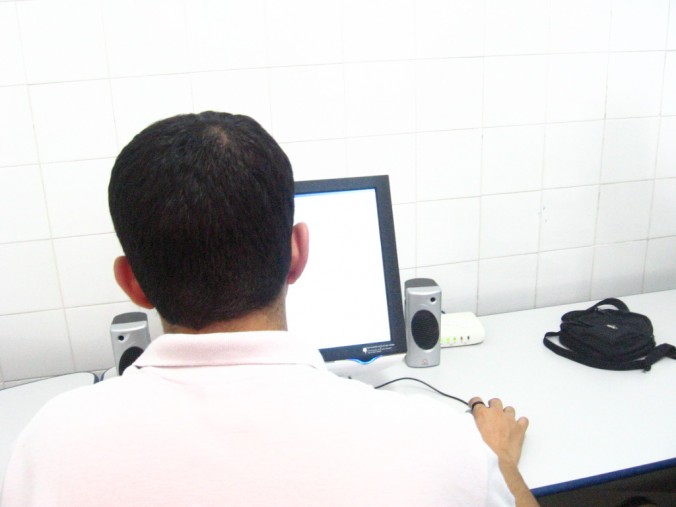You’ve drafted up a brand new job posting for a fantastic position aimed at students and grads. You check it for spelling errors, get it approved by management, and post it on every online job board you can find. Over the next few weeks, you find yourself with applications from all the wrong candidates!
Posting a job online can often feel like a shout into the void. There are so many people trying to have their message heard, and so many individuals missing messages that were meant for them. When posting a position meant for young professionals, it’s important to make it clear that this particular “shout” is meant for them.
So go back to your first draft and take a close look – chances are, your posting is missing a few of these key elements:
1. Is it easy to navigate?
Many students and grads click a posting, only to be hit with a giant wall of plain text. This can already be a dealbreaker for many young professionals, since the time taken to decipher a posting could easily be spent locating another well-formatted listing. Plus, candidates often know what information they’re looking for – they’re searching for key words and phrases, and requirements.
Candidates usually make the decision to apply to a posting within the first 10 seconds, so make your first impression count! Be sure to break up your text with clear headings, so it’s easy for your candidate to locate and scan through the posting that they’re looking for. Bullet points are much easier for a job hunter to scan through, and allow you to format your info in a clean, concise way.
2. Does it have personality?
If you’re looking to impress an aspiring young professional, you need to first show that you care enough to make your job look visually appealing. Every generation understands the impact of visual appeal, and millennials are no exception – so take some time to put some “punch” in your posting.
If the platform allows, consider adding a few images. Think outside the logo – students and grads want to see your company culture, your values, and work environment. Consider posting one or two appropriate company photos to add variation. If that’s not available, try stylizing your text (i.e. bolding important sections, using italics when appropriate, etc.) to make it more interesting to the eye. But be careful not to go overboard with these – the focus should never be taken away from your main written posting!
3. Does it show your “online” side?
Young professionals are looking for companies that are a match for them. A great way to connect with their interests is through technology, and it’s not enough to simply provide a link to your website. You have to communicate in the same fashion as them – and a lot of students and grads gauge this through how active you are on social media.
If you have a company Facebook, Twitter, or LinkedIn, be sure to provide an easy-to-find link in your posting. This accomplishes two things: it will give them easy means to research your company and find out what you’re all about, as well as convey a clear message that you value the same things as them. It may not seem like it produces a huge impact right off the bat, but remember that the recruitment process is all about building small connections on many levels to build a relationship with your candidates.
4. Does it use conversational language?
Companies are sometimes so used to writing professional documents filled with legalese and industry jargon that they transfer the same style to their job postings. Complicated job postings can put off a potential job candidate. After all, no one wants to spend time sifting through text they don’t understand – they will likely use that time to find another posting they like better.
There is a simple trick to writing job postings – read it aloud. If you wouldn’t describe the position in that fashion to a friend, then you need to rewrite. Remember, you’re not “dumbing down” the text. You’re simply making it more relatable to your target audience. Plus, your candidate will find it easier to connect to the company on a personal level. After all, young professionals don’t want to work for you – they want to work with you.
5. Does it echo millennial values?
Many of these points so far have been rooted in the same concept: relate to your candidate! Each small thing you include in your posting that helps the candidate mentally connect with the company will eventually result in a strong rapport between the interviewer and those who make it to the hiring stages. However, not all of these efforts have to be so subtle.
Include a small section in your job posting that introduces your company to the candidate. Think of it as a dating profile – consider what type of candidate you want to attract, and what aspects of the company would fit what they’re looking for. For example, if you are looking for business-minded individuals who focus on targets and tangible achievements, talk about the fast-paced environment and the company’s financial success. If you’re looking for candidates who are passionate about their work and enjoy connecting with people on a social level, consider mentioning community events that the company has been involved in, and the company’s positive, supportive dynamic.
Remember that students and grads WANT to work with you for a long time – they value companies that are willing to invest in their skills through training and support. Help them see what a potential career path might look like with your organization, and you’re much more likely to see the responses you’re looking for!
Discussion: Do you think that Gen Y responds to job postings differently than previous generations?



